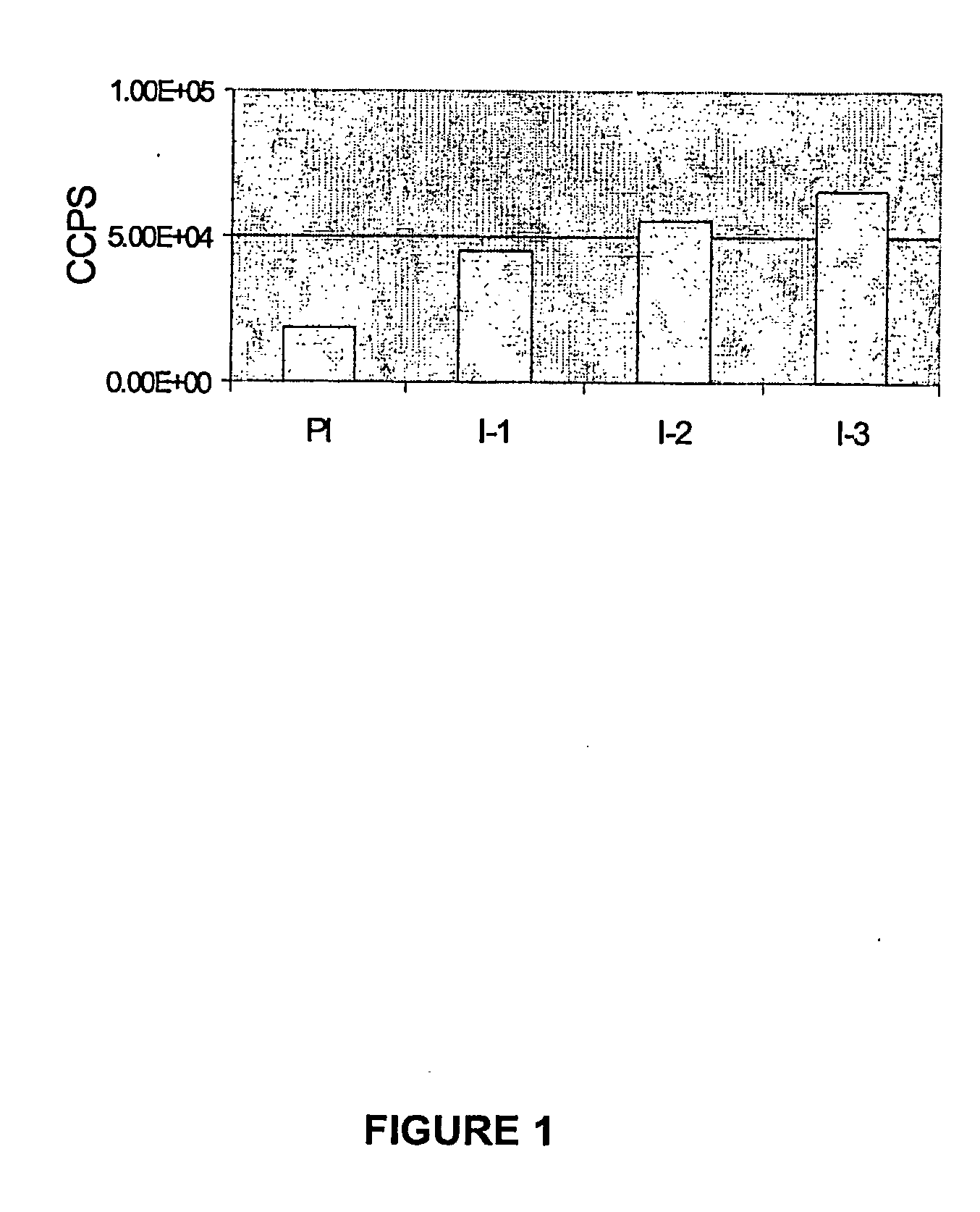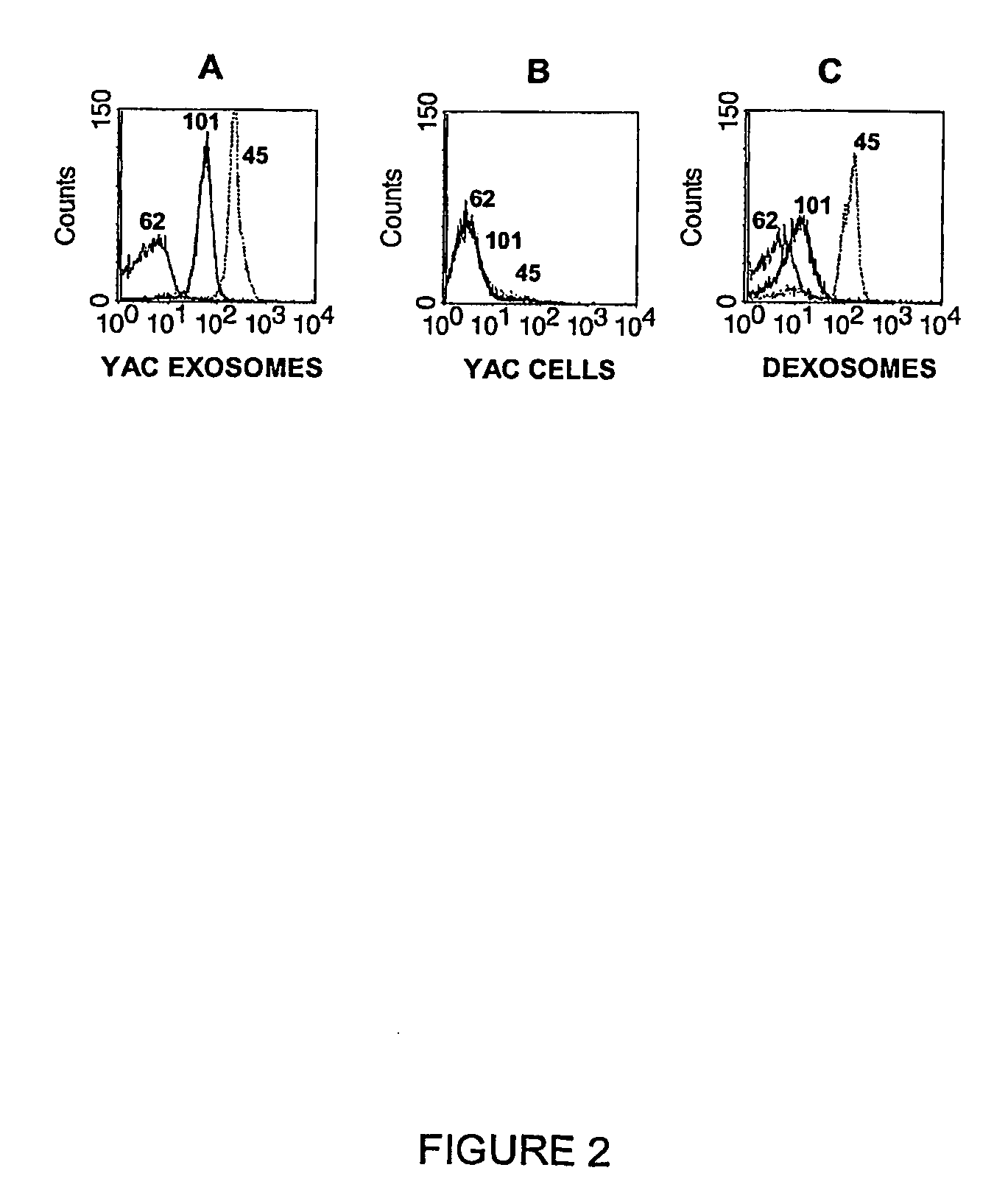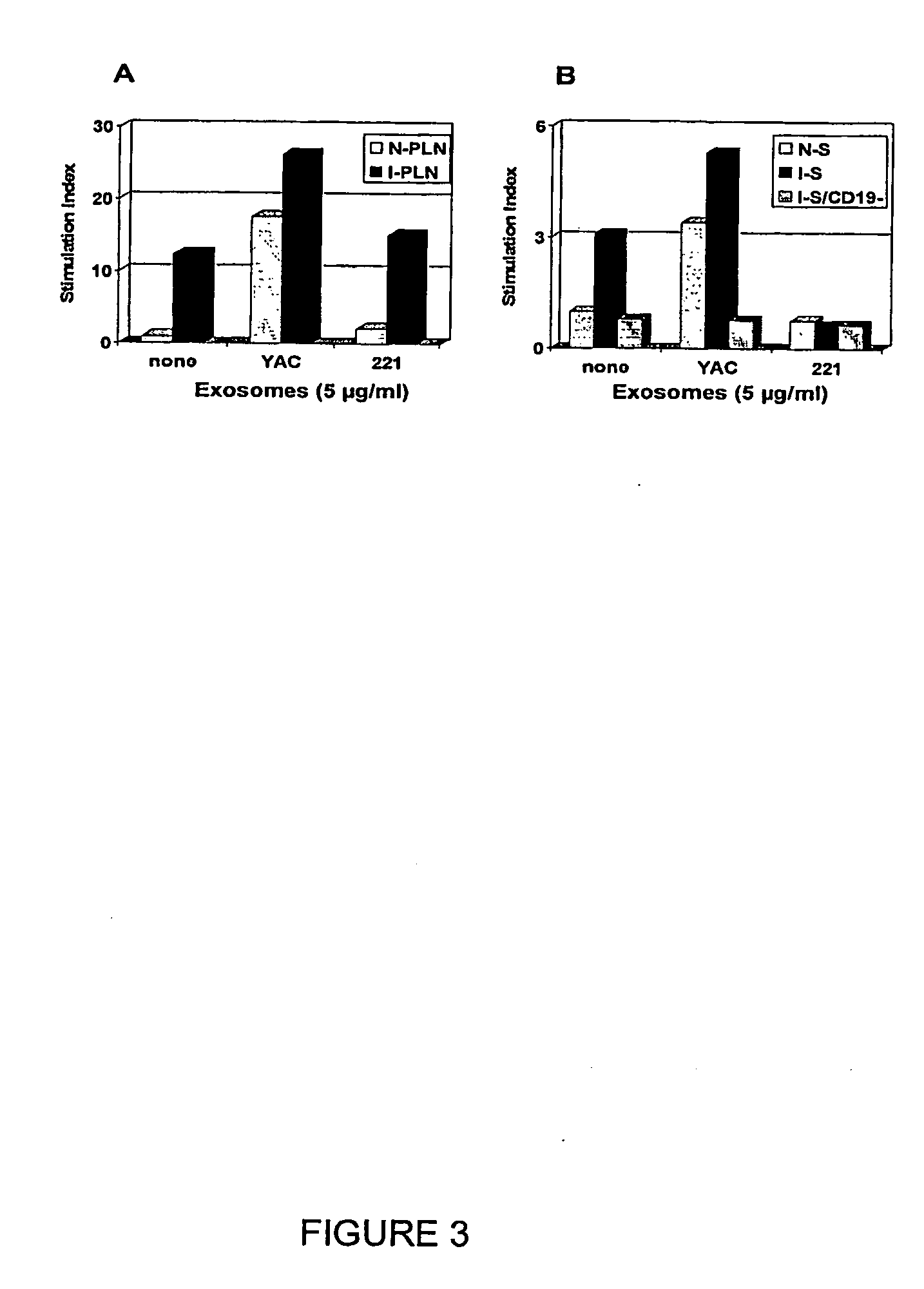Exosome ligands, their preparation and uses
a technology of exosomes and ligands, applied in the field of exosome ligands, their preparation and use, can solve problems such as complicated interpretation of experimental findings, and achieve the effects of improving blocking efficiency, improving exosome blocking agents, and increasing the affinity of exosome reagents
- Summary
- Abstract
- Description
- Claims
- Application Information
AI Technical Summary
Benefits of technology
Problems solved by technology
Method used
Image
Examples
example 1
Induction of Anti-Exosome Antibody Responses Upon Syngeneic Immunization
[0089]The murine lymphoblastoid cell line YAC was selected for production of exosomes as it is negative for the major polymorphic markers MHC I and II. Theoretically, most polypeptides on YAC exosomes are expected to be self antigens regardless of the strain of mice used for immunization. YAC cells were expanded into 1-liter spinner flask in ADCF media (Hyclone), a protein-free media for large-scale production of exosomes. Five-day cell culture supernatant was transferred into 250-ml centrifuge bottles and spun 5 min at 2000 rpm to pellet cells. The supernatant was then filtered through 0.2 μm filter and concentrated to 100 ml using a fiber cartridge with a 500 KD size cut-off. Concentrated supernatant was then layered onto a 30% sucrose cushion and spun under 100,000 g for 1 hour 15 min at 4° C. Gradient interface was collected and sucrose was removed by PBS-diafiltration using a 500 KD fiber cartridge as above...
example 2
Specificity of Anti-Exosome Antibodies
[0092]Spleen cells of mice immunized as described in Example 1 were fused to SP2 / 0 to produce hybridoma. Hybridomas were then screened and selected for production and secretion of anti-exosome antibodies by ELISA also as described in Example 1. Antibodies of the IgM subtype produced by the Hybridoma clone 45, 101 and 62 (negative control) were purified from culture supernatant by diafiltration using a fiber cartridge with a 500 KD size cut-off. The purity of diafiltered and concentrated fractions was verified to be at least 90% by SDS-PAGE analysis. The purified antibodies were used to stain exosomes coated on 1-μm beads as well as exosome-producing cells. Staining was detected by FACS analysis using a secondary anti-mouse IgM conjugated to a fluorophore. The results of this analysis are shown in FIG. 2.
[0093]Results: A shift of fluorescence was detected when YAC exosome-coated beads were incubated with IgM 45 and 101, whereas no fluorescence wa...
example 3
In Vivo and In Vitro Stimulation of B Cells by Exosomes
[0095]Spleen and popliteal lymph nodes of mice immunized as described in example 1 were collected and cells were counted using an hematocytometer and stained with PE-conjugated anti-CD19 antibody to determine the percentage of B cells. Cells were also plated into the wells of 96-well tissue culture plated at 2×10E5 cells / wells in RPMI / 15% FCS supplemented or not with exosomes. Spleen cell samples depleted of CD19-positive cells using Myltenii magnetic beads were also used in the assay. Following a 3-day incubation at 37° C. / 5% CO2, 1 μCi H3-thymidine was added to each well and proliferation was counted 16 hours later. The assay was performed in triplicate and the results, shown in FIG. 3, are reported as Stimulation Index over the mean count obtained with cells of unstimulated naïve mice.
[0096]Results: Based on counts from about ten experiments using at least 3 animals per experiment, the number of cells in PLN of naïve mice was...
PUM
| Property | Measurement | Unit |
|---|---|---|
| Composition | aaaaa | aaaaa |
| Immunogenicity | aaaaa | aaaaa |
Abstract
Description
Claims
Application Information
 Login to View More
Login to View More - R&D
- Intellectual Property
- Life Sciences
- Materials
- Tech Scout
- Unparalleled Data Quality
- Higher Quality Content
- 60% Fewer Hallucinations
Browse by: Latest US Patents, China's latest patents, Technical Efficacy Thesaurus, Application Domain, Technology Topic, Popular Technical Reports.
© 2025 PatSnap. All rights reserved.Legal|Privacy policy|Modern Slavery Act Transparency Statement|Sitemap|About US| Contact US: help@patsnap.com



